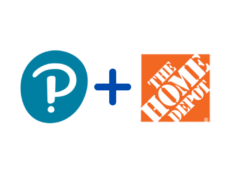
Education Technology
Op-Ed
The Crucial Role of Translation Services in Promoting Broader eLearning Access
By eLearning Inside
March 21, 2022
eLearning is an industry that has seen massive growth in recent years. Its pace had already begun to quicken at the turn of the millennium as businesses started to adopt it as part of their training strategies, and the demand for it was further compounded as the COVID-19 pandemic shut down traditional learning institutions around the world.
But does this growth translate into fair access? One of the major challenges to eLearning access is content available in different languages. Not only that, the cultural milieu of each audience needs to be taken into account to create material that is more engaging and effective for learners.
Translation services can help ensure that an educator’s multilingual content is accurate and more relatable to their target students.
What are Multilingual Remote Classes?
Multilingual remote classes go beyond the traditional classroom setup where it only has one language as a teaching medium. It also encourages a multilingual approach in teaching class curriculum under a remote setting.
The goal of creating multilingual content is to have it become more relatable to its target audience in question. Because of this, educators who engage with international students would seek out translation services as it involves various technical and design considerations. In some cases, it can also mean replacing sections of content altogether with something more tailored to the target audience.
Changes made by professional translation services when they create multilingual content:
- Using local idioms and colloquialisms in place of those in the original language.
- Modifying examples and anecdotes to be more culturally relevant.
- Substituting names of people and locations to sound more familiar.
- Converting currency and units of measurement to local standards.
- Providing support for special characters and languages that read right-to-left.
- Adapting or creating a glossary for a specific domain.
- The Importance of Translation Services in eLearning.
Even though schools have begun to reopen, eLearning shows a great potential to become a profitable industry. The Global News Wire reported that in 2020, the eLearning industry was estimated at $250.8 billion and it’s projected to reach $457.8 billion by 2026. Like China and Germany, international markets are investing more and more into this industry and, because of this, investing in multilingual remote classes and curricula if you want to attract international students.
Creating multilingual content for remote classes becomes crucial because language is the medium by which knowledge is transmitted to learners. Thus, the language used in learning resources must be well-crafted and geared toward communicating this knowledge as clearly and comprehensively as possible.
To get more insight into this matter, we looked for a translation expert who could share their perspectives regarding multilingual eLearning and the process. We interviewed Ofer Tirosh, the CEO of Tomedes, who oversaw several multilingual eLearning projects for international institutions with his translation services company from across different markets worldwide.
Tirosh explained that paying attention to the language used in eLearning content improves the learning experience at all points of the learning journey and ensures that the objectives of the material are met.
He informed us that the benefits from creating multilingual remote classes could be summed up in four major points: engagement, learning, consistency and access.
5 Ways Professional Translation Services are Making eLearning Accessible
From the insights of Tirosh and the information that we gathered, we listed below a couple of reasons professional translation services can make your remote classes more immersive and impactful for multicultural students.
1. Fosters better engagement In 2018, LMS provider LearnUpon surveyed 200 organizations that utilized eLearning platforms in their training strategy. The results were clear—71% of their respondents reported that their biggest challenge was engagement.
Many factors drive engagement, and language is one of the most significant. Having well-crafted content doesn’t guarantee interest from people who speak a different language. Conversely, poorly-translated content is frustrating and likely to turn off audiences.
By going further and making the content more relevant and relatable, audiences become more invested in engaging with it.
2. Facilitates effective learning Because translated content is more relevant to its target audience, it is easier to grasp and improves learning outcomes. Translation services can assist in removing barriers to understanding by speaking to an audience directly on their terms and help them arrive at the same meanings more organically, instead of being bound so strictly by the original text’s literal sense.
3. Ensures consistent results Better learning outcomes lead to better performance. This is why a one-size-fits-all approach to learning isn’t effective, especially when it comes to language. Translating learning material ensures that the knowledge is getting through to learners in an optimal way for them to be able to apply it in practice.
4. Allows equitable access More broadly, it allows eLearning to effectively reach more and more people worldwide. As the world becomes increasingly global and digital, more new opportunities for learning continue to arise. By providing translated content, more people will access these opportunities on a fair level.
5. A Holistic Approach to Language Translating content requires a comprehensive and holistic approach to managing and modifying content. Here are some of the major factors that language professionals need to keep in mind throughout the process:
Environment support. Professional translation services need to be aware of the technical aspects of the eLearning platform they are working on and either make the necessary adjustments or work with the platform’s developers to do so. They would also need to know how to handle the software tools that the project uses.
Cultural awareness. Learning resources often use familiar cultural references to drive better engagement, but this can prove a double-edged sword by alienating learners who don’t belong to that culture. Tweaking content for cultural fit is thus necessary to maintain the quality of these resources.
Project objectives. Ultimately, this project aims to educate learners in the clearest, most effective way possible. Translation services will have to keep this objective in mind for every decision they make in modifying the content.
Conclusion: Toward Broader eLearning Access
Today’s developments in eLearning are an exciting frontier that will only continue to expand as humanity’s demand for education increases. Knowledge is an essential resource to navigate our increasingly complex world, and we need to create solutions that give everyone a fair opportunity to gain it and, in that way, ensure that nobody is left behind. Through translation services, we will most likely see more multilingual content from eLearning and remote classes platforms in the coming years.
Featured image: Katerina Holmesm, Pexels.









No Comments